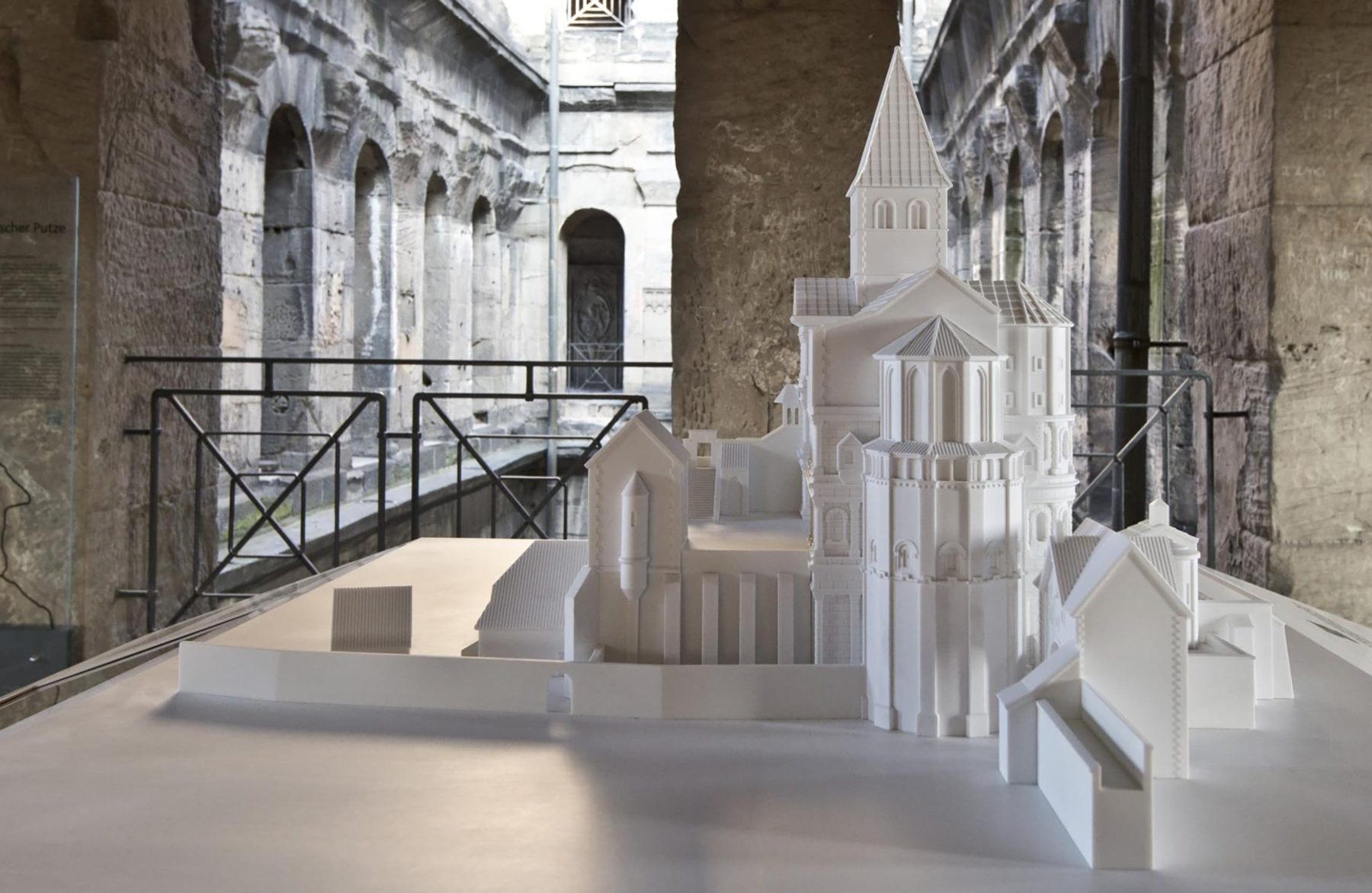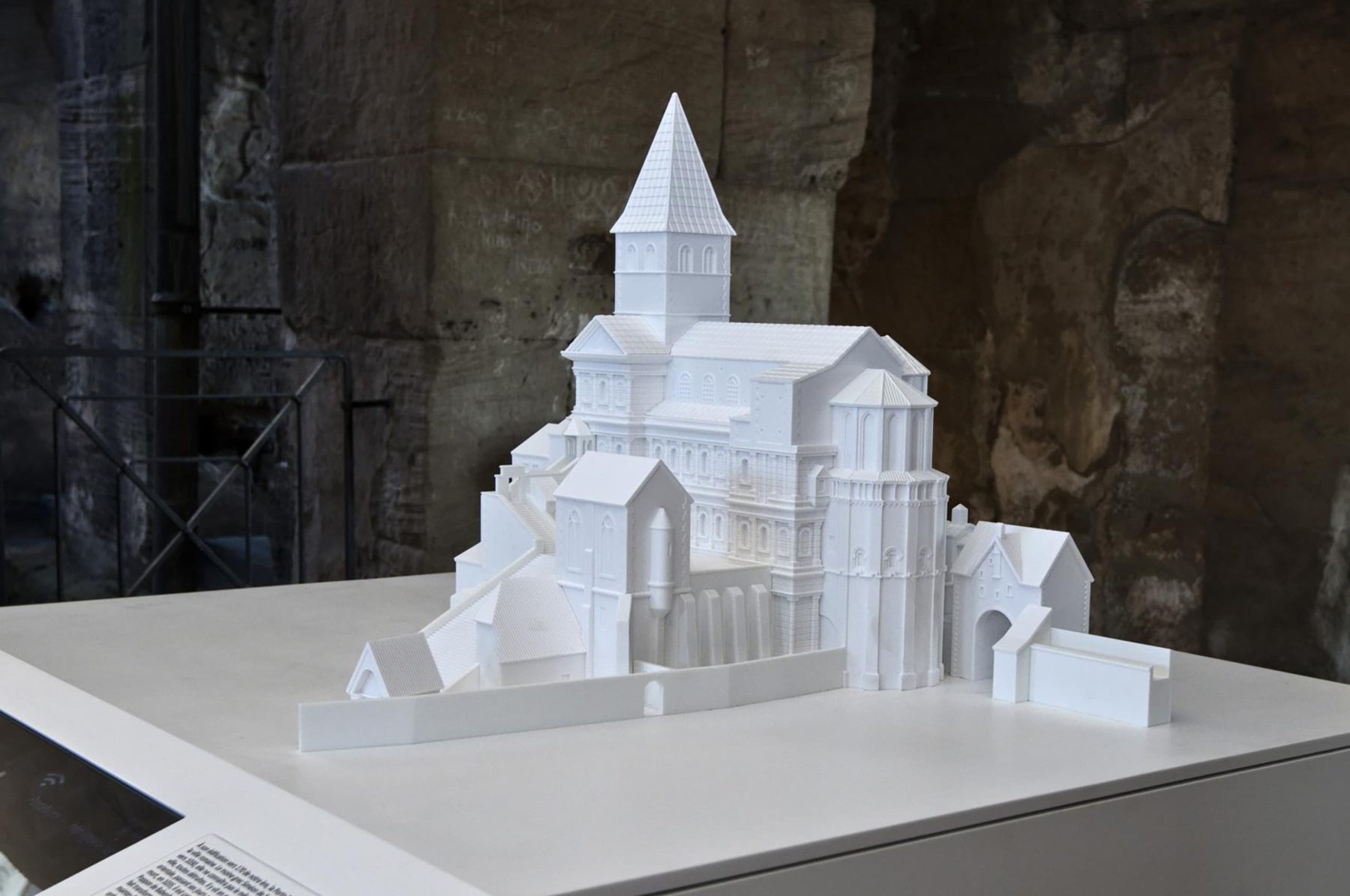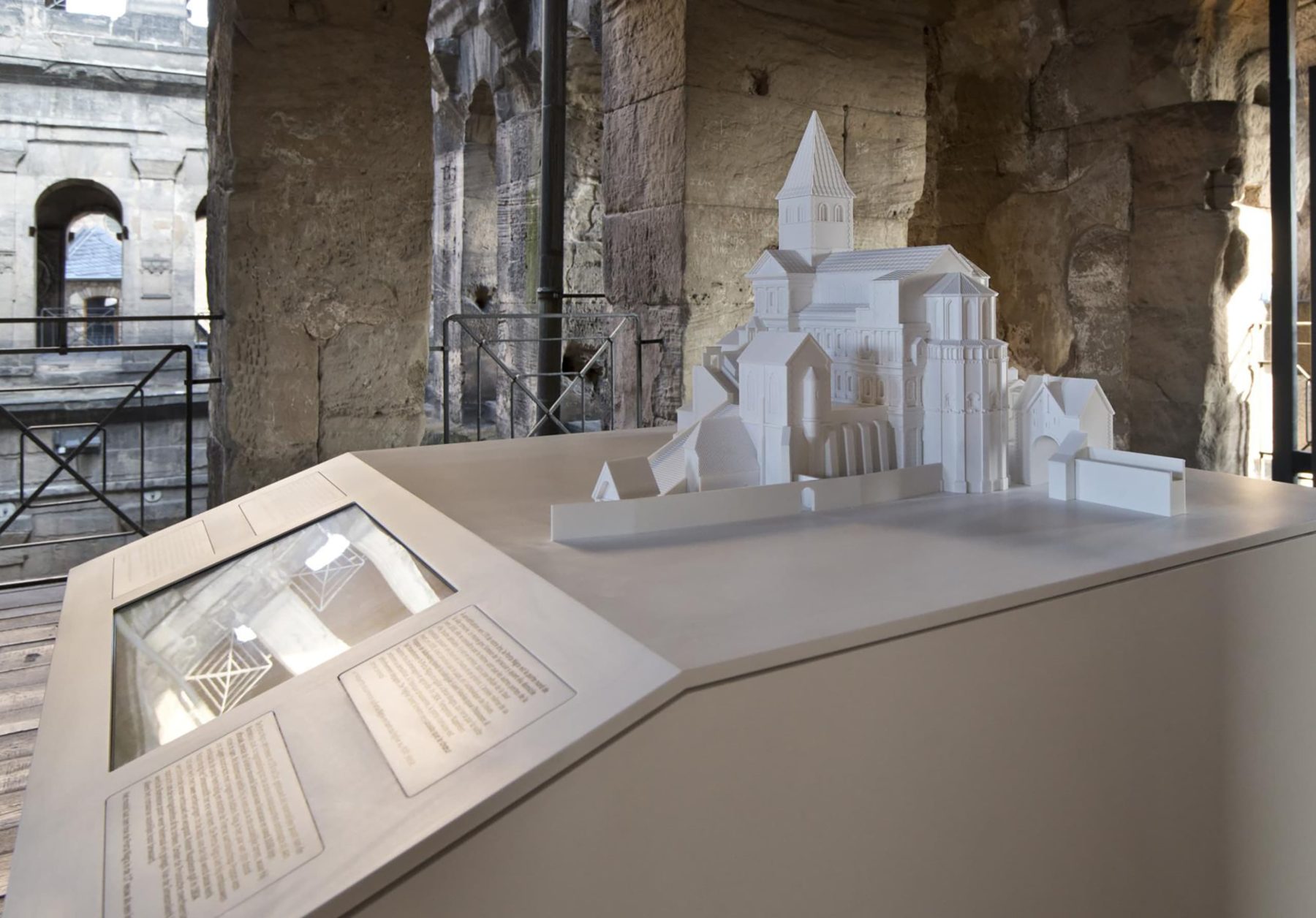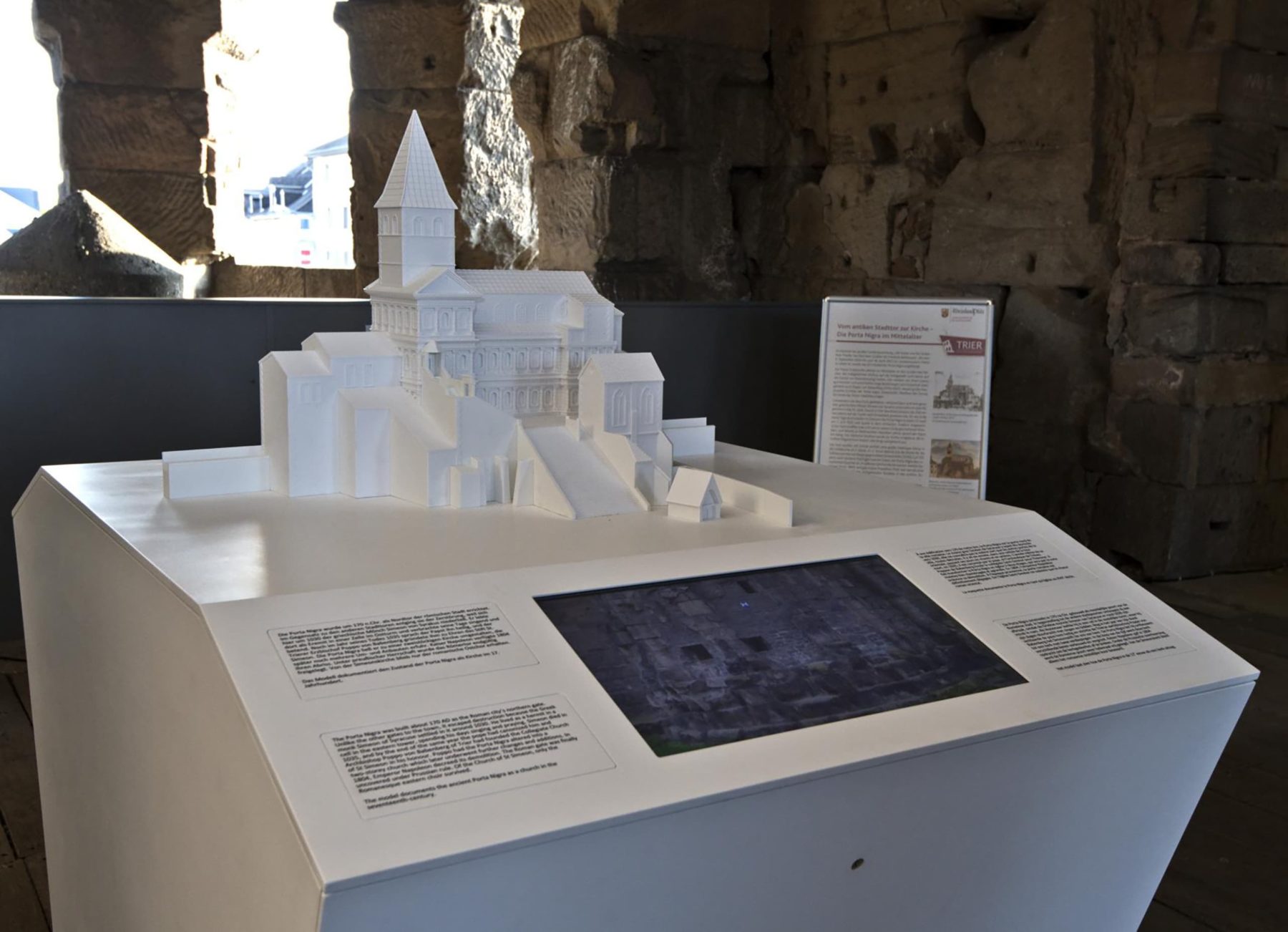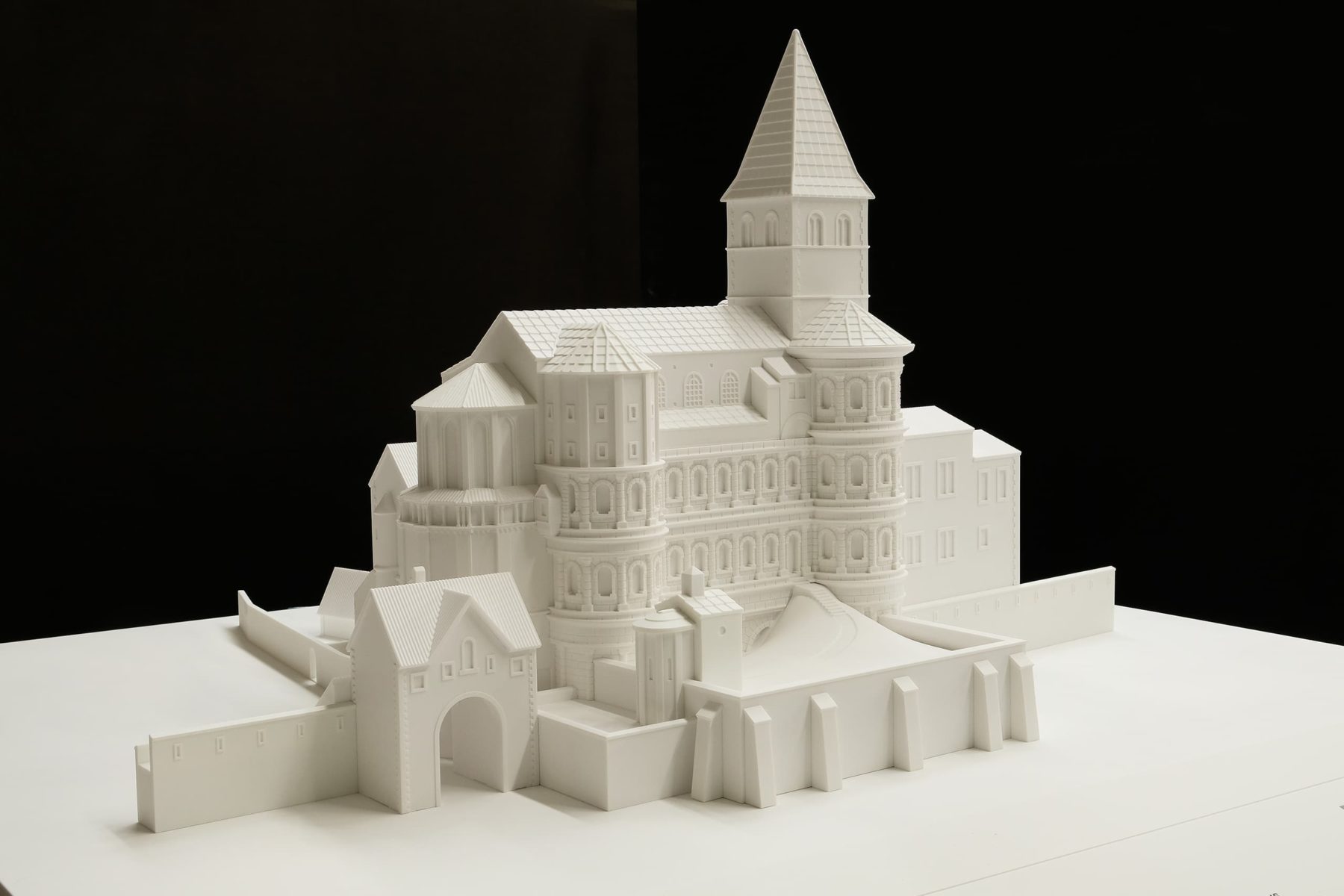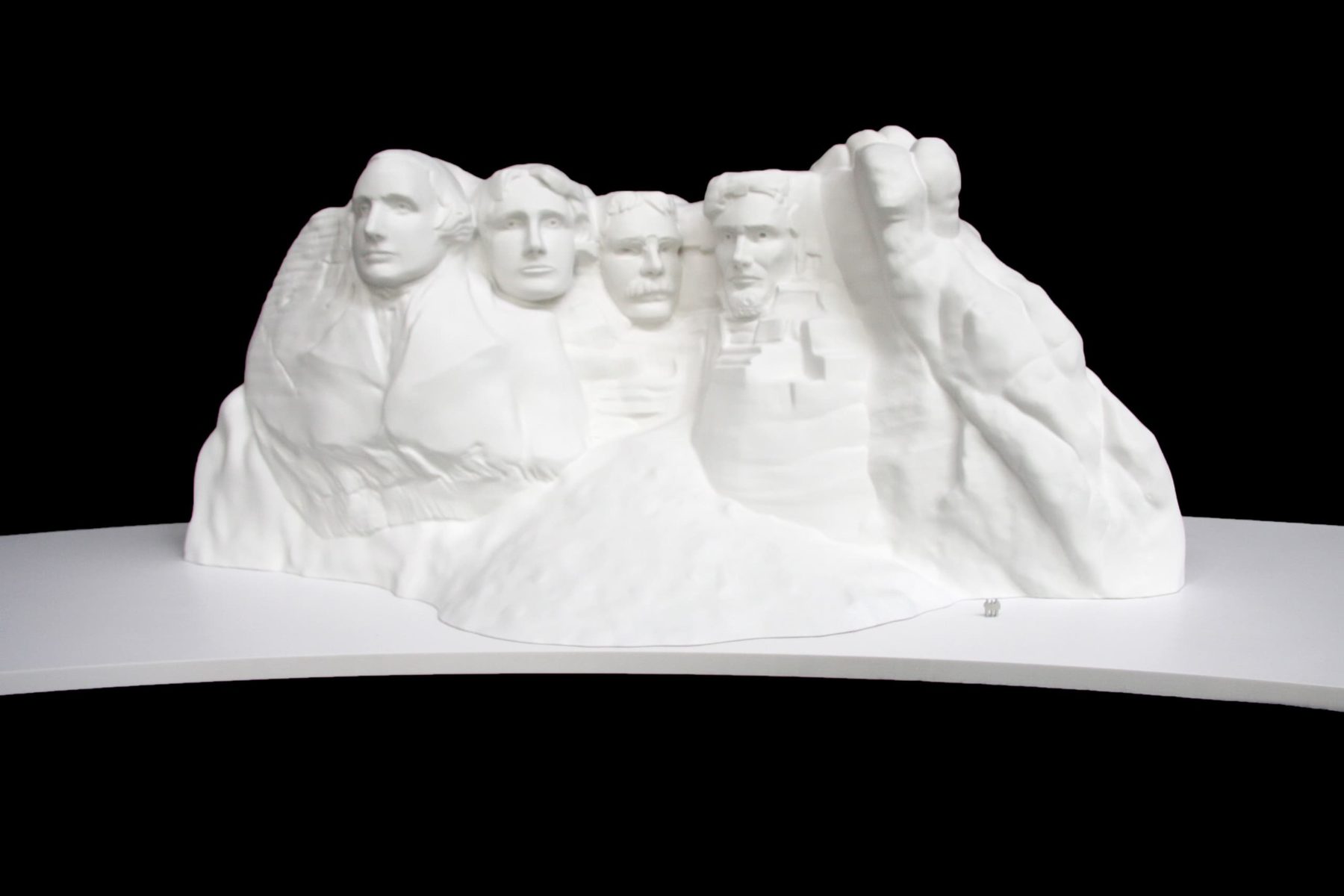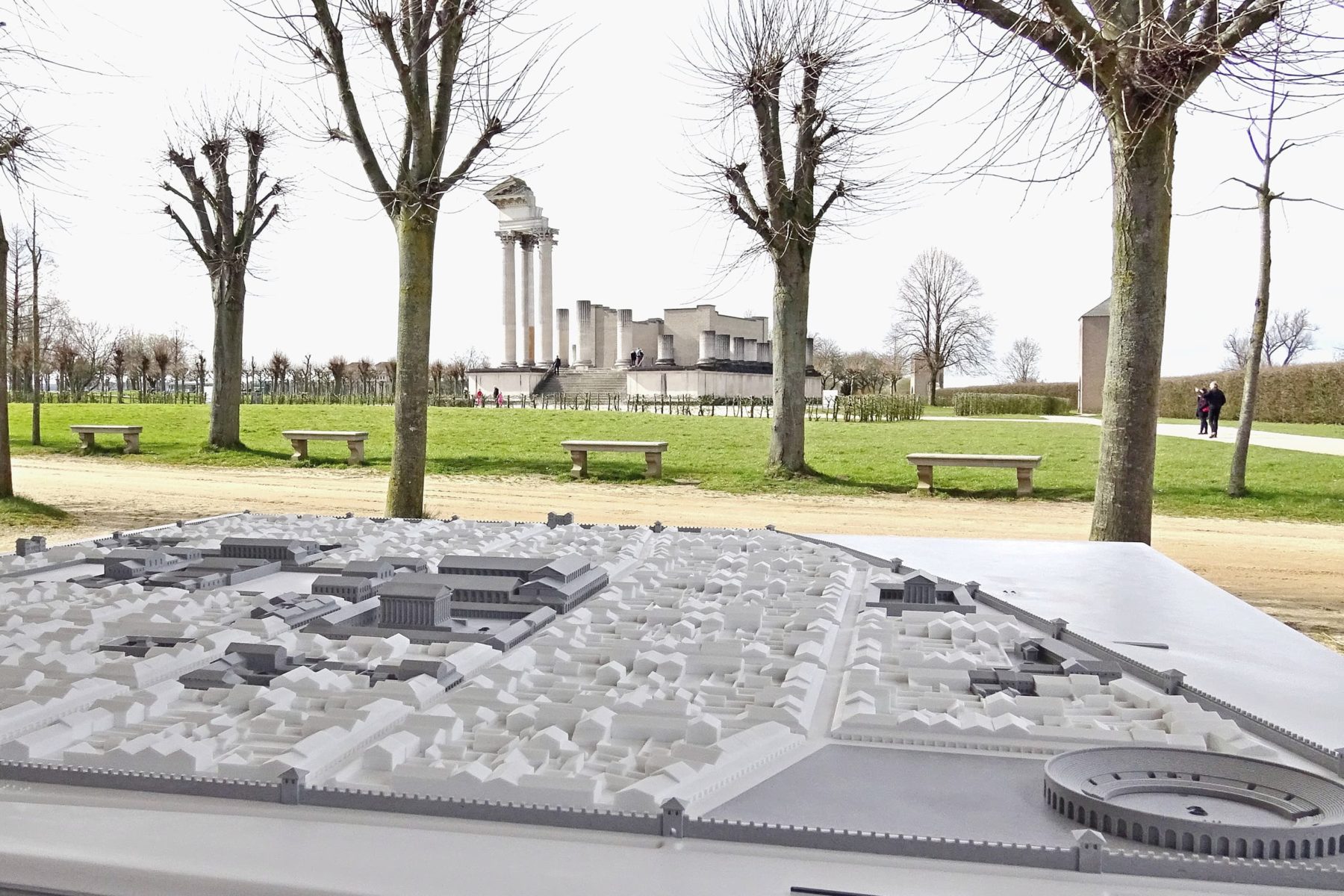For 800 years, the Porta Nigra in Trier served as a double church. Until Napoleon demolished the church and the original Roman city gate was rebuilt. The model now provides a vivid insight into the vanished era of the building as a double church.
The UNESCO World Heritage Site of the Porta Nigra has stood for 1850 years. In the Middle Ages, the former city gate was converted into a double church by the Pope in honour of a saint. What the church actually looked like before 1500 still remains obscure, as the oldest source on its appearance can only be found in a Merian engraving from 1650. The demolition by Napoleon complicates building research and the work of art historians even further.
